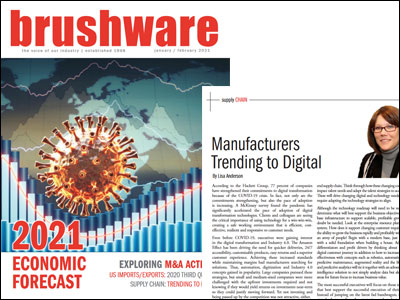According to the Hackett Group, 77% of companies have strengthened their commitment to digital transformation due to the COVID crisis. In fact, they are not only strengthening their commitment, but the pace of adoption is increasing. A McKinsey survey found that the pandemic has significantly accelerated the pace of adoption of digital transformation technologies. Clients and colleagues are seeing the critical importance of utilizing technology for a win-win-win, creating a safe working environment that is efficient, cost effective, resilient, and responsive to customer needs.
Even before COVID-19, executives were gaining interest in the digital transformation and Industry 4.0. The Amazon Effect has been driving the need for quicker deliveries, 24/7 accessibility, customizable products, easy returns, and a superior customer experience. Achieving these increased standards while maintaining margins had manufacturers searching for solutions. Thus, automation, digitization and Industry 4.0 concepts gained in popularity. Large companies pursued these strategies, but small and medium-size companies were more challenged with the upfront investments required and whether they would yield a return on investment near-term so that they could justify moving forward. Yet not investing and being passed up by the competition was not attractive either.
The pandemic has proven that those companies that were better prepared and further down the digital transformation roadmap fared better. These companies had better visibility into their supply chain, were better able to respond to changing customer requirements and were able to accommodate for social distancing and could flex capacity more quickly than their counterparts. All is not lost. It is time to jump into the deep end of your smart manufacturing and end-to-end digital supply chain journey.
Should we immediately purchase robots and 3D printers? Not necessarily. Start by understanding your new business environment. What will the next normal look like for your industry? Adapt your strategy for how you will thrive with changing customers, buying behaviors, an evolving competitive landscape and with your end-to-end supply chain. Think through how these changing conditions will impact your talent needs and adapt your talent strategies to accommodate. These will drive changing digital and technology needs, and so you will need to adapt your technology strategies to align.
Although you will need to reevaluate your technology roadmap to determine what will best support your business objectives, there is no doubt you will minimally need a modern base infrastructure to support scalable, profitable growth. Look at your enterprise resource planning (ERP) system. How does is support your changing customer requirements and ability to grow the business rapidly and profitably without hiring an army of people? Start with a modern base like starting with a solid foundation when building a house. Add customer differentiators and profit drivers by thinking about the broader digital customer journey in addition to how to increase operational effectiveness with concepts such as robotics, automation, IoT and predictive maintenance, augmented reality, and the like. Big data and predictive analytics will tie it together with an advanced business intelligence solution to not simply analyze data but to predict areas for future focus to increase business value.
The most successful executives will focus on those technologies that best support the successful execution of their strategy. Instead of jumping on the latest fad bandwagon, take a brief step back to realign your strategies and evaluate what will provide the greatest return on investment. On the other hand, do not delay for lengthy studies. Those companies that succeed post COVID will be those geared for speed, agility, and responsiveness simultaneously. Align your technology roadmap and take tangible steps forward with your digital transformation.
Published in Brushware Magazine, December 31, 2020



